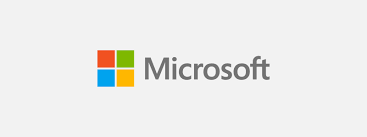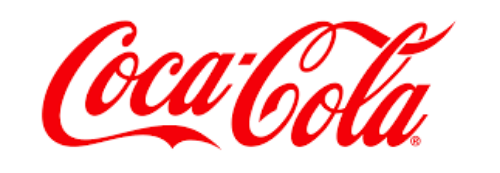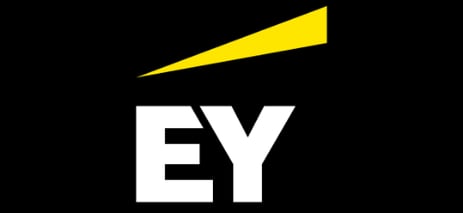What’s Next for Blockchain? Trusted Systems of Record
Businesses of all shapes and sizes, especially those in the supply chain and procurement industry, waste hundreds of millions of dollars on internal systems of records and solutions that only loosely meet all their requirements in resources planning and acquisition, customer management, and so on.
The biggest problem has revolved around transferring the correct data further past the one-up and one-down value chain relationships. As a result, businesses were forced to use slapped-together siloed systems in which nobody could trust the data, restricting visibility, agility, and coordination across a supply base.
What’s more, failing to adequately coordinate these systems between businesses would start a domino effect. It would cause considerable disruption, inventory loss, disputes, inflated capital costs, regulatory fines, and other waste of resources.
To solve these problems, or to avoid them altogether, businesses require a common frame of reference. This frame of reference would have to be constantly running, highly resistant to tampering, and capable of preventing anyone from taking over the system and locking organizations out of their operations.
However, integrating such a solution requires capital expenses that not many companies can afford. An affordable solution that meets all the above requirements can be derived through the use of a public blockchain or Layer-2 network anchored to one.
Bringing blockchain into the fold
Deploying blockchain in the process empowers all permissioned parties in a corporate ecosystem with a trusted system of record, allowing them to share all kinds of digital data. In such a system, every one of those parties agrees to the transaction, which guarantees network-verified consensus and provides full visibility to parties’ transactions. At the same time, it ensures security and authenticity. This is also the solution to the traditional lack of trust between organizations (for instance, that data might find its way to a competitor), allowing secure sharing of data with removed risk of undermining competitive edge.
The Baseline Protocol solution
A project making this very principle a reality is the Baseline Protocol. It started out in 2020 as an initiative and OASIS open-source project combining advancements in blockchain, zero-knowledge cryptography, and messaging. The main goal? To create secure and private business processes at a low cost.
With this new technology, the Baseline Protocol aims to meet the high standards of security, privacy, and performance demanded by corporate IT departments that couldn’t be easily met by previous approaches to blockchain technology.
The Baseline Protocol is the brainchild of blockchain startups Provide and Unibright, which have come together to fulfill the major requirements of organizations for participating with Baseline-enabled business processes. In addition to being supported by fourteen founding companies, the Baseline Protocol has later been joined by more companies, and the trend continues to this day.
Building solutions with the Baseline Protocol is possible from scratch, starting with its v1.0 core that includes a set of ‘vanilla’ packages. However, businesses will also be able to build on top of existing reference implementations, such as BRI-1 or BRI-2.
Microsoft’s Cloud Supply Chain

Microsoft has developed its own solution that was first conceived in early 2018 and launched into production in late 2020 with eight suppliers. Since that time, it has been gradually increasing the volume of inventory and transactions in its commodities value chain. The company’s converged ERP and blockchain solution rests on the principles of ERP as a financial system of record and the blockchain as the scalable, n-tier system of record for transactions, monitoring, telemetry, and archiving.
It comprises a blockchain consortium, reporting in support of LSP as an agent, financial reconciliation, ERP, supply chain services integration, planning, as well as master data, CRM, and data warehouse. Using blockchain as the foundational building block, the company aims to facilitate a whole range of advantages. These include tokenized inventory, serialized track and trace, provenance and custody guaranteed, tokenized invoices and purchase orders, digitized transactions on financialized assets, as well as sustainability data capture.
Coca-Cola bottling company

In an effort to ensure its supply chain transparency, the IT provider belonging to the largest Coca-Cola bottling business, Coke One North America Services (CONA), has agreed to give the Baseline Protocol a trial run.nCONA is already using a Hyperledger Fabric solution devised together with SAP, which allows bottling companies to exchange information (on that note, Hyperledger has also developed Grid, its new platform for building supply chain solutions with distributed ledger components). However, with the existing solution, data was only shared between CONA bottlers and franchisees, which is why the company has turned to the Baseline Protocol. The Ethereum-based Baseline Protocol will allow it to include external suppliers into the process, such as the manufacturers of cans and bottles. This can only be done through a public blockchain.
This way, if a supplier has insufficient stock, the buyer won’t get surprised with the delivery of the wrong quantity. When a supplier makes an alteration, the change is represented on the blockchain. The solution doesn’t store the details of the order itself, but a Zero-Knowledge proof of it, also protecting any smart contracts.
EY consulting firm

The consulting firm EY has also implemented the Baseline Protocol into its EY OpsChain Network Procurement solution. The aim of implementing this blockchain-based solution is to turn complicated supplier agreements into smart contracts, empowering them with traceability and contract management.
This will allow both sellers and buyers to function as a network in which everyone is informed about volumes and spend, as well as up-to-date rates and terms. With it, the company is trying to address the problem of increasing competition between networks of companies, their partners, and suppliers.
It sees an effective solution in introducing the ability to work as a network, above the level of any single ERP system. Since the whole process is carried out on a public chain, there’s no need for convincing a business or supplier to join an expensive, closed proprietary network.
Final words
Deploying trusted systems of record could help address a whole range of issues across supply chains. These issues include the high price of the existing solutions, limited coordination capabilities, as well as the lack of trust, security, and visibility. But in addition to those obvious problems, it could go much further.
In other words, it could also solve humanitarian problems like the use of conflict materials in the high-tech and tech-focused industries (e.g. automotive) as it enables traceability all the way from mining raw materials to recycling and/or disposal. This is why the solutions developing trusted systems of record are not just a necessity for an improved supply chain, but for a better world, as well.
What do you think the future holds for systems of record? Have any questions or comments, or have you noticed something we missed? We’d love to hear from you, so drop us a comment! We also invite you to check out our blogor join us on our informative and entertainingBlockchain Innovators podcast. There you can learn more about the revolutionary world of blockchain and its constant innovations.

